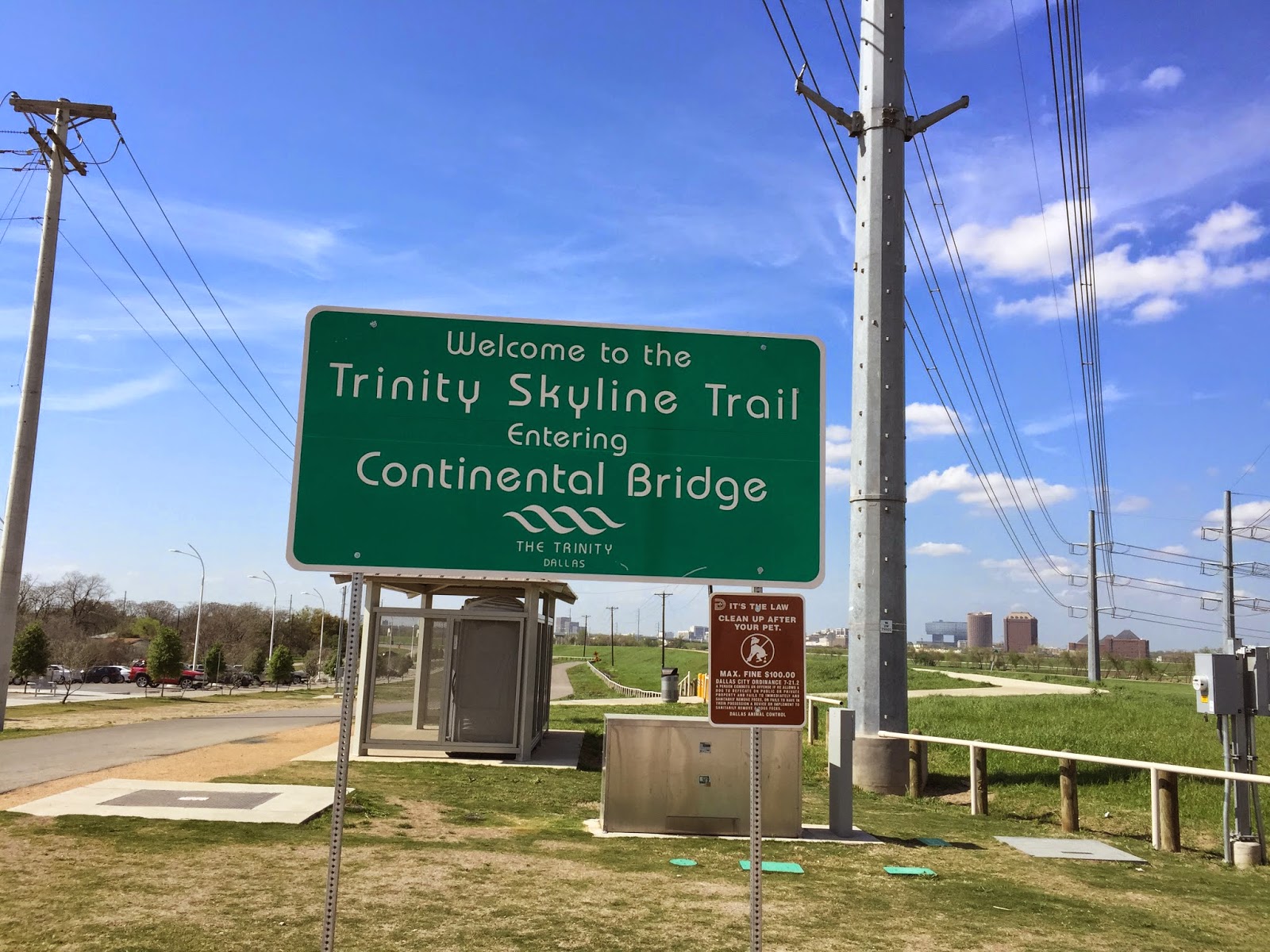We bordered the red trolly in Dealey Plaza, steps away from the Texas Book Depository, now called the Sixth Floor Museum, the grassy knoll and the spot on Elm street where the assassination happened and which is now marked with a white X on the street. The trolly took us through the West End Historic District where the old red brick manufacturing, industrial and warehouse buildings are now preserved and used for nightclubs and entertainment venues. The adjacent greenway, next to the Trinity River, will soon undergo a massive development with shops, parks, golf courses and will be the largest and most expensive ever built. We rode out to get views of the Margaret Hunt Hill Bridge (see pictures below) that is the first of three similar bridges, designed by Italian Santiago Calatrava. The bridge is 1,800 feet long and 40 stories tall. Uptown to the Arts district, the Dallas Museum of Art, Crow Collection of Asian Art, City Performance Hall, the Margot & Bill Winspear Opera House and where there are apartments and condominiums, and through the downtown and the corporate headquarters buildings. We really like these city tours because you get a lot of information, see a lot of sights, and get a feeling for what makes a city unique.
The skyline of Dallas.
Construction around the city. On the right side of the picture you can see the construction of the second of three bridges.
More highways under construction.
The Red Trolly.
Dealey Plaza with the Book Depository building in the background. The two upper windows on the far right of the sixth floor is where the shots were fired.
George Dealey was a civic leader and publisher of the Dallas Morning News. Recognizing that because Dallas is land-locked it was necessary to bring transportation to the city, Dealey was instrumental in bringing the railroads.
The Woodall Rogers Freeway passes through the city and a four acre park has been built over the freeway. The park is lined with food trucks.
This Dallas Pegasus sits on top of the Magnolia Building and was erected for the 1934 American Petroleum Institute Convention. Pegasus was originally the logo for the Socony-Vacuum company of which Magnolia Oil, later know as Mobile, was a part. For years it was visible for miles around the city and became a symbol of the importance of oil to the city.
Where Neiman Marcus began - the flagship store.
There are numerous sculptures in the city including this one. The "eyes of Texas" perhaps?
In front of the Kay Bailey Hutchison Convention Center is this sculpture that commemorates the trails that brought settlers to Dallas and cattle to market.
There are 49 cattle and three cowboys, all unique.
In the Visitor's Center is this Pegasus that sat atop a Mobil gas station in east Dallas where it was lighted and rotated. Before that, it was on display in the 1939 World's Fair in New York.
The John F Kennedy Memorial paid for by the citizens of Dallas and designed by architect Philip Johnson. It is a cenotaph, or "open tomb,' that symbolizes the freedom of John F. Kennedy's spirit as it appears to float, with no visible support, more than two feet above the earth.
This is a replica of the cabin built by John Neely Bryan, a colonist from Tennessee, who arrived in late 1841, opened a store, and is considered to be the "Father" of Dallas.
After the tour we thought we would walk to the Continental Bridge, a pedestrian bridge that parallels the Margaret Hunt Hill bridge and passes over the soon-to-be-developed greenway.
We got a city map from the Visitor's Center and tried to find our way to the bridge. There was no good or direct way and we had to pass through some of the downtown construction.
Eventually we found it and walked the full length.
Passing over the Trinity River.
This sign was at the far end of the pedestrian bridge. Evidently it is more developed at the other end.
This young man was getting his graduation picture taken in front of the large "B" and "G" letters at the end of the bridge.
When we asked what the B & G stood for we were told "BIG", but you are supposed to stand in the middle to make the "I".
The Centennial Pedestrian Bridge on the left, the Margaret Hunt Hill on the right and the greenway and Trinity River below.
Some playful dodecahedrons on the bridge.
Other playful objects. This one swiveled and tilted.
Frederick pushing the button to activate the fountain.
I think you can just make out the jets of water that would form patterns and vary in height.
This is a great building in downtown and changes shape depending on your view point.


























This is a great set of photos---especially "B" "(person)" "G"!
ReplyDeletedefinitely looks like an interesting city to visit!
Nice article it's very helpful information. Thanks for sharing. And I hope you keep sharing such information Dallas Mobile Glass
ReplyDelete